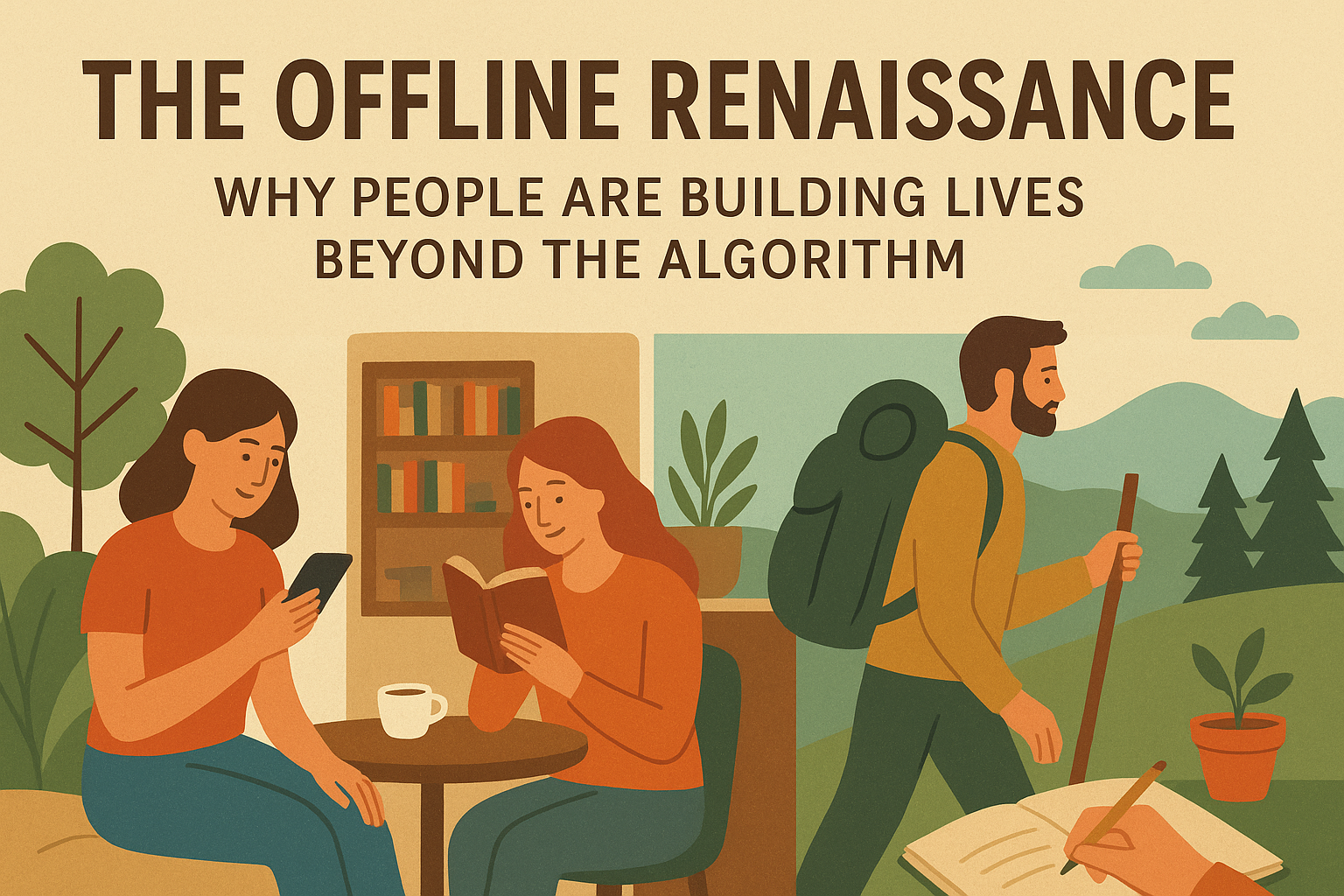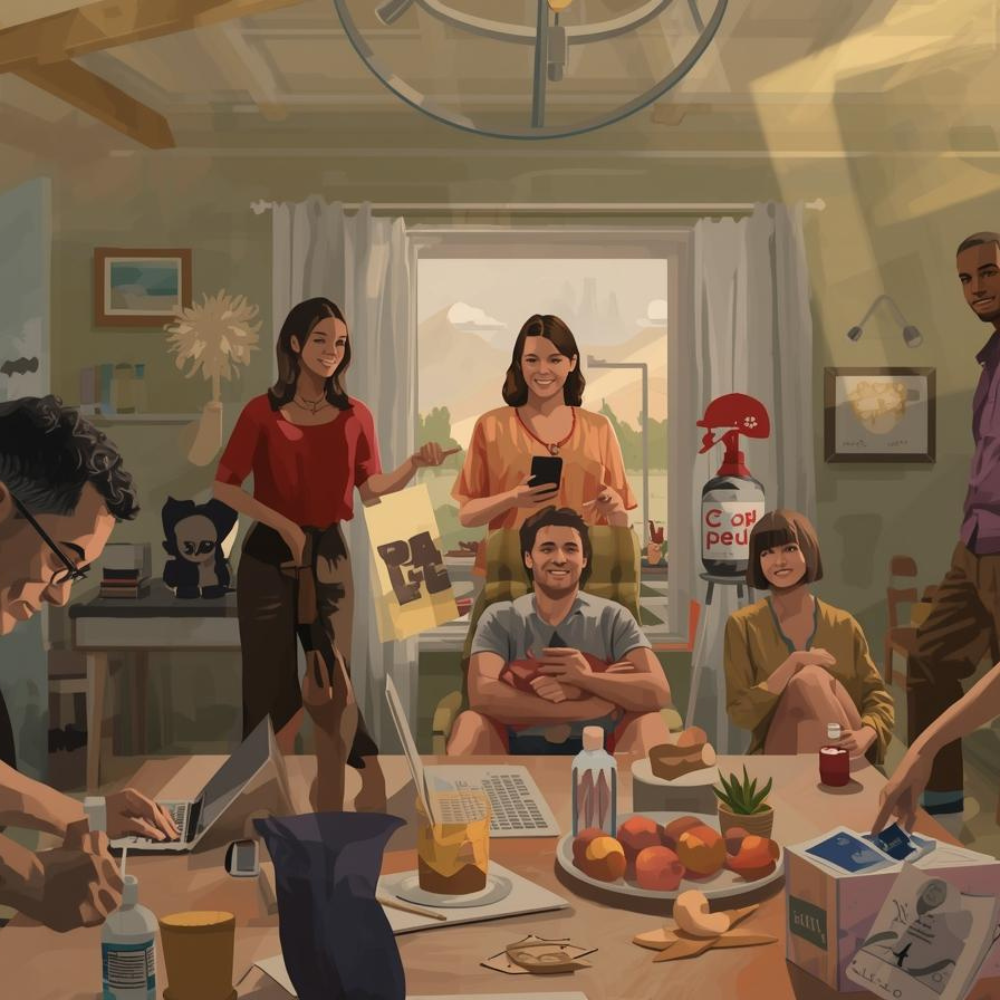The “Offline Renaissance”: Why People Are Building Lives Beyond the Algorithm
Introduction
Today, we live in world where everything has been filtered, optimized, and structured by algorithms—and increasingly, people are craving realness. The "Offline Renaissance" refers to the return to a life not centered on incessant notifications and curated lives. Whether reacquainting ourselves with old hobbies or simply spending time in nature at a slower pace, we are re-learning to enjoy an unfiltered world. It is a movement that has emerged quietly reminding us that the best times are the ones in which we looked up and away from our gadgets.

The Digital Detox Movement: Prioritizing Being Present instead of Being Connected
In an era where we struggle to keep our phones out of our hands, the notion of “digital detox” has emerged as a quiet act of rebellion. People are discovering that constant connection does not equate to genuine connection. The temptation to check notifications, to mindlessly scroll, or present our lives as series of likes, has left many feeling exhausted and unfocused. A digital detox does not mean completely disappear from the digital world, but to create a reasonable distance, for example, by not using social media on weekends, keeping your phone in the other room at night, or going for a walk without headphones. These small forms of unplugging are working for some to rediscover calm, creativity and concentration. You’ll be surprised how much richer the world appears when you stop trying to document it for other and start experiencing it for you. This movement is not anti-tech; it is about using tech rather than allowing yourself to be used by tech.
Reconnecting with Actual Communities and Passions
As virtual spaces get louder and more performative, people are returning to the authentic experience – the joy of laughter with friends at the coffee shop, the excitement of shared interests, and community art spaces and book cafés are slowly filling with people looking for authentic connection. We are reminded that we bond without an algorithm – we bond by simply being present. Old hobbies like painting, gardening, and cooking have re-entered our lives as we discover grounding ourselves with very simple practices. There is something sacred about creating with your hands or sharing a moment with another human without the additional urge to post. This is not nostalgia but nourishment. It provides evidence that while technology connects us across the globe, the experience of belonging still starts and grows best in small, local loops of relationships where eye contact and laughter cannot be replaced by an emoji.

The Growth of Deliberate Living and Thoughtful Use of Resources
Slow living is the antidote to our world of digital distraction and fleeting solutions. We already see this shift in behavior as people learn to appreciate simplicity — making meals from scratch, reading physical books, or caring for plants, rather than seeking instantaneous pleasure online. This isn’t about being nostalgic for days gone by, but trying to take back our attention from the madness of modern life. Mindful consumption plays an important role as well — less but better, watching on purpose, spending time on purpose. Many are coming to understand that life feels fuller when we stop trying to optimize every moment and start living the moments. The beauty of slow living is that it promotes peace without perfection — slow living does not mean doing everything slowly, it means doing what matters, at depth. It’s a subtle reminder that joy does not exist in the next notification — it exists in the spaces between.
Creating a Harmonized Digital-Offline Engagement
Finding equilibrium in a digital-centric world is difficult. Even so, finding harmony is becoming a required aspect of modern wellness. Instead of going completely offline, people are testing boundaries – maybe taking a morning without a screen, practicing a digital Sabbath, or perhaps limiting their social media use to a predetermined hour or time of day. Others are integrating technology with offline habits that value mindfulness: journaling to provide reflection, meditating plainly – no app required, or simply spending an hour a day, outdoors. The hope is not to leave the digital world altogether; but that we may co-construct our lives, and do so intentionally. This mindset invites us closer to being connected to both parts of our lives – the majestic world online, and the beauty of living. It reinforces the idea that peace will not be found by simply deleting the app, but by responding to it with intention, and making the responsible financial decision to be powered on, or off. In large part, this offline renaissance requests us to find a balance – where productivity meets presence, and the digital and human parts of life are co-existing harmoniously.
Conclusion
The Offline Renaissance isn’t about regressing; rather it’s about moving forward with purpose. As we rediscover life outside of the algorithm, people are discovering room to breathe, room to connect, and room to create beyond the digital din. It reminds us that our value is not measured by engagement stats but by moments and experiences. The future isn’t purely online and it isn’t purely offline – it is the best of both worlds.
